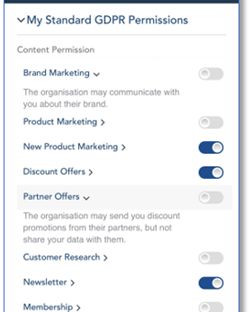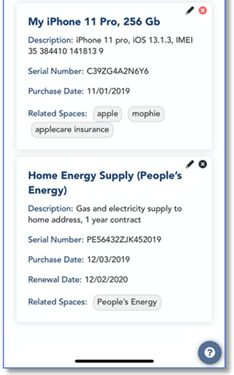Who remembers using ads in the “Items Wanted” sections of their local newspaper? How many people still do this? Of course, there are modern, on-line equivalents but they represent a tiny proportion of the introductions between buyers and sellers for used items, let alone new items. Surely this is not due to the lack of sellers wanting to know about potential buyers. So, could it be due to a lack of appetite that buyers have for inviting sellers into a conversation?
Virtually every organisation would like to know about the future intentions of its customers and prospects. This may relate to purchases in the case of a commercial organisation or donations in the case of a charity. Millions of dollars and millions of hours of effort are consumed every year by organisations trying to understand what customers intend to do.
Currently, this effort tends to be directed in one of three ways:

Analytics and modelling to understand past behaviours, identify likely purchase indicators and model future behaviour. This can be extremely accurate where purchases are frequent and the market is relatively stable. But, It is full of challenges and inaccuracy when purchase intervals are extended and where the product itself may have changed substantially between purchases. PC’s, Televisions and Motor Vehicles fall into this category.
Research and data capture on existing customers or prospective customers to ask them when they intend to purchase (again). This can either be done in specific research to identify prospects or via questions added to regular customer satisfaction or NPS research.


Some leading organisations in this area have a strict discipline of asking customers to update their next purchase intention at each customer interaction. The basic flaw with this approach is that Customers lie, or at least do not think very carefully about their answers. Various research and academic input suggest that the best accuracy that can be expected is around 50%. The reasons for can be the loss of control that results from sharing their intentions or a fear of bombardment of sales approaches that cannot be stopped.
Waiting for real indicators from customers, which can vary from specific sales leads to requests for trade-in values or repeat service requests, as well as many other predictors of varying reliability. The two main problems with relying on these indicators is that they tend to be very last minute and that they are not as reliable for new customers as they are for existing customers.
But in the future we will be much more clever……surely

Despite huge, ongoing investment in the status quo, a better way of connecting intended purchasers and relevant suppliers is set to emerge as people learn to trust data-responsible organisations and those organisations learn to build and treasure that trust. The emergence of legislation and technical capabilities that provide high levels of security, combined with technology and protocols that give customers complete control of their data, is going to make this this possible. The proposition to purchasers is simple:
Tell us, and any other vendors that you trust, via an intermediary that we all trust, that you are expecting to be in the market for something. Give us as much detail of your interest as you wish and we will offer to connect with if you think we can help. We will not know who you are until we each digitally sign a simple information sharing agreement. You then share just the information about yourself that you want to and we contact you to explain what we can offer. Finally, whenever you wish, you can withdraw your buying intention and either opt to remain on our contact list or ask to be removed from it.
None of this is new thinking. The concept of so-called Vendor Relationship Management (VRM) has been around since the year 2000 when it was mentioned in a prediction of future trends in the US edition of Computerworld magazine. What HAS changed is the technology capabilities and regulatory frameworks that enable the required level of consumer trust to be earned and retained. Privacy and Data Protection regulation, massively more robust cyber-security and distributed personal identities supported by block-chain techniques all creating safer data sharing.

This all seems strange given the amount of buying intention information that we share on social media sites, via accepting cookies in our browsing and by being targeted by ad-tech. The big difference with the emerging buying intention offerings is that they place the control of which vendors get to know how much about customers back in the hands of the customers.

The new way of enabling and encouraging customers to open up about their intentions and requirements gives them tools and puts them in the driving seat. Typically, the services would be provided by an organisation that is totally independent of all vendors or by a ‘player’ in the market that is very widely trusted by their customers to act on their behalf.
Potential customers register with their chosen data intermediary by providing as much information as they feel comfortable sharing, but this is not immediately shared with any vendors.
Contact preferences in terms of channels, times and communication types are also normally registered so that customers are always ready-to-go when they want to add a new purchase intention and make this available to potential vendors.
These purchase intentions can either be ongoing: “I’m always interested in reduced price offers on Golf Clubs” or time-limited: “I would like a holiday in a 4-star hotel in Portugal during September this year”.
Access to the service for potential vendors is tightly controlled so only trustworthy organisations, that have proven their integrity in protecting and using the data, are allowed to access it. All buying intentions are anonymous until the customer accepts an invitation from the vendor to share information and even then, they do not have to share all of their information.


The vendors details can then be stored in the customer’s library of ‘their’ vendors or the data sharing can be stopped once the purchase is complete. The vendor must then remove the customer’s data. Everything is stored in an audit trail that provided irrefutable proof that all the customer’s requests have been carried out.










I am very impressed. I found a lot of informative stuff in your article. Keep it up. Excellent JOB Thx!.